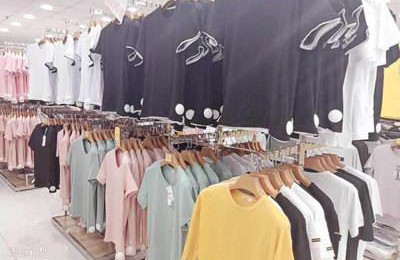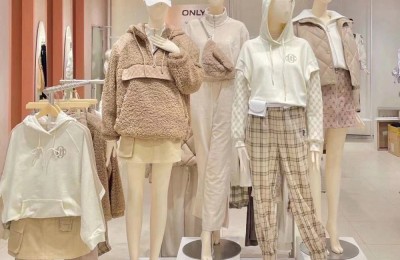The black swan that puts pressure on global markets is here again!
U.S. President Trump stated via social media on the afternoon of the 1st that the United States will impose an additional 10% tariff on US$300 billion of goods imported from China starting from September 1 this year.
The return of external negative factors has made the already struggling textile market even more uncertain.
The United States once again imposed an additional 10% tariff on 3,000 Chinese goods. Trade risks have increased sharply. Textile companies The order is in jeopardy!
Since the Sino-US trade war started last year, the textile market and even the entire Chinese manufacturing industry have been affected and orders have dropped sharply.
Since May, the shipment of gray fabrics has decreased, and the operating rate of weaving factories has declined
Previously, since May, the textile market Orders have gradually decreased, and now we have entered the traditional off-season stage, and the market is relatively sluggish. Affected by the off-season and the onset of high temperatures, gray fabric manufacturers are not enthusiastic about production. Some manufacturers have reduced their operating rates, and a small number of weaving manufacturers have issued high-temperature holiday notices, which lasted for about 10 days. According to the sample monitoring of China Silk City Network, the operating rate of looms in Jiangsu and Zhejiang has dropped to about 70%. Among them, the operating rate of water-jet looms in Shengze and Changxing is 70-80%, the operating rate of warp knitting machines in Changshu and Haining is 60-70%, and the operating rate of Xiaoshao circular knitting machines is about 50%. Compared with the first half of the month, the operating rate dropped by nearly 10%.
Weaving manufacturers have insufficient orders and the demand for raw materials has decreased
On July 30, PTA prices stabilized and rebounded, and polyester filament production and sales exploded. However, the high level of production and sales only lasted for 3 days. On August 1, polyester production and sales fell back to 40%-50%. Back to plain. The main reason is that downstream weaving manufacturers do not have the support of orders and have little demand for raw materials. The owner of a weaving factory with 100 looms said that due to the rise in PTA, raw materials have not been purchased. The reason is that there are insufficient orders and lack of funds in the recent stage. It is necessary to be more cautious when purchasing raw materials and focus on rigid needs, which is the safest. Coincidentally, the owner of another large-scale weaving factory with about 1,000 units also said that he did not purchase raw materials at the end of July and could use them as he wanted. There was no need to stock up on raw materials. One reason was that raw material prices were unstable and fluctuated widely, and the other reason was that there were currently insufficient orders. , the demand for raw materials is not large.
Foreign trade orders are missing and foreign companies take turns to take holidays
Since this year, foreign trade has The market situation is not satisfactory, and foreign trade textile enterprises report that orders this year are reduced by 20%-50% compared with last year. According to the practice of previous years, the foreign trade market mainly develops orders for the second half of the year in July and August, and orders will be placed intensively in September and October to start orders for next spring.
However, there have not been many development projects by textile companies recently, and they have also declined compared with previous years. A salesperson from a foreign trade company in the Shengze area said that although this time last year was also the off-season, there were still some small orders and a lot of prototype development, so he was still quite busy. However, there are currently no orders and no prototypes. Not many. The company’s employees are generally relatively free and are already considering taking a vacation.
The U.S. dollar exchange rate fluctuates frequently, which has a great impact on foreign companies receiving orders
In addition, with the concerns about Sino-U.S. trade Sentiment intensified, the U.S. stock market and crude oil plummeted, and the RMB exchange rate against the U.S. dollar was also affected, with frequent fluctuations. As of Friday, the onshore RMB exchange rate has reached 6.9 yuan, compared with 6.7 yuan in early May, an increase of 2.99%. Fluctuations in exchange rates have a certain impact on the orders received by foreign trade companies. Most companies quote based on the real-time exchange rate of the day, and the real-time exchange rate is also used when settling foreign exchange, so there is a price difference in between. For large orders, the exchange rate difference is likely to be the profit of the entire order, so the exchange rate also has a greater impact on foreign trade companies.
The meeting between China and the United States at the end of June eased relations between the two sides, and the textile market was able to breathe a sigh of relief, with the order volume rising slightly to a certain extent. However, as the Sino-US trade friction heats up again, the market will be in trouble again.
Next, August is the seasonal transition period. Traditionally speaking, it is a transition period when the market gradually turns from the off-season to the peak season. Late August is also the weather vane for the market in the second half of the year. According to previous years, orders will be placed one after another in late August. However, this new round of additional tariffs imposed by the United States on China may directly affect the orders of textile companies this month, so it is also It will directly affect the market conditions of the entire Golden Nine peak season.
Especially since this year, the explosion of looms in the Midwest has caused overcapacity in the market to intensify. This time the black swan strikes again! The global trade market is in a huge shock. Decreasing orders, falling prices, and increasing inventories are plaguing textile companies. What follows will be a painful torment for textile companies!
Although news of a new round of additional tariffs has been released, China and the United States will continue to negotiate, and the overall situation is uncertain. In the face of Sino-US trade friction, the editor believes that textile companies do not need to be too pessimistic. They should actively prepare trade risk warnings for the second half of the year, actively adjust product positioning, open up new trade markets, and it is best to remain unchanged in response to changes. countermeasures.
</p





